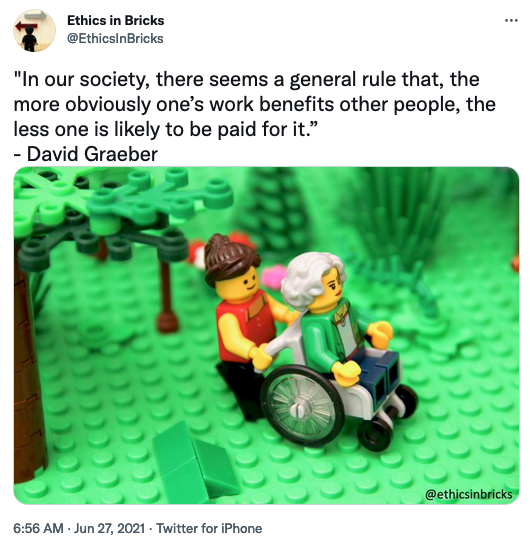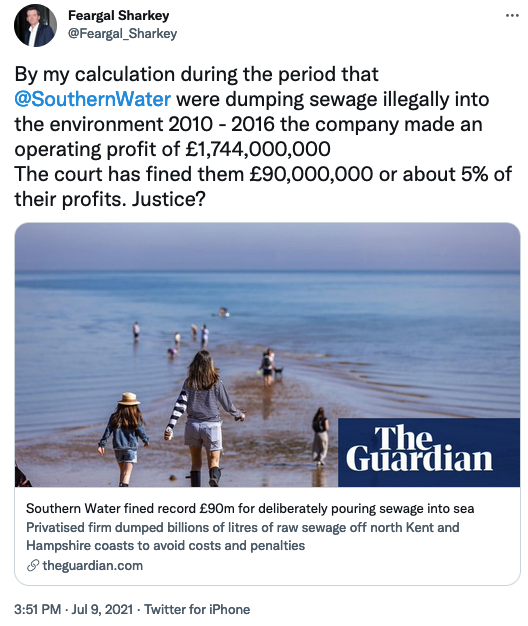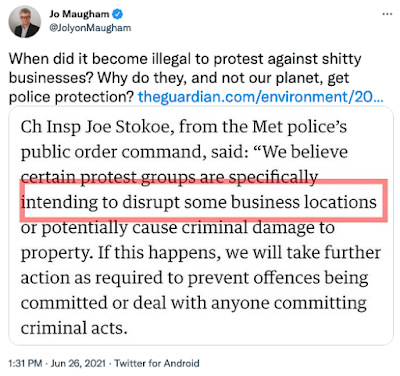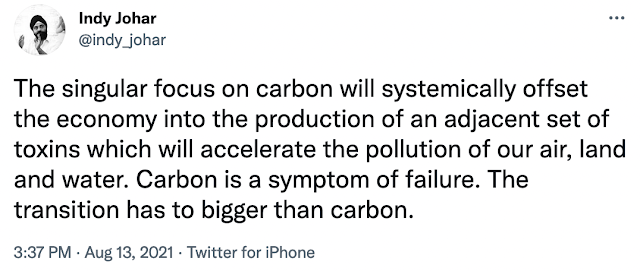Summer-notes: food, climate
The National Food Strategy came out. It seemed like a lot of data folks were upset by the hexagons showing land use (mostly beef and lamb pastures), but there's some other nice visualisations and info in Dustin Benton's twitter thread.
CoFarm colleague Sue Pritchard has many good thoughts on these matters. We've had a lot of great cofarming going on to:
CoFarm’s growing area has doubled this year as we aim to produce at least twice the amount of food than last. In 2020, we grew more than 4.5 tonnes of vegetables across 0.66 acres, which was donated to 9 local community food hubs. The remaining 1.3 acres of the market garden contained cover crops, which fix nitrogen into the soil and attract insects that pollinate food crops and eat pests.
This year, most of these cover crops have been cleared to make space for growing more vegetables, but there is no shortage of flowers. The market garden’s perimeter, and walkways within it, are bursting with colourful blooms, and the four acres of wildflower meadows recently sown outside of the market garden are growing well.
 |
| https://twitter.com/suepritch/status/1415699483829194763 |
It’s not news that greenhouse gas emissions are rising. What is however starkly outlined in the IPCC report are the impacts of shorter-lived greenhouse gases, especially methane. Over half of total global emissions come from human activities, and 40% of those come from agriculture, 35% from fossil fuels, and 20% from waste.
The elephant in the room is, of course, a cow. A third of these agriculture methane emissions come from livestock...
On land use, we must protect intact ecosystems and restore degraded landscapes. In the UK, we must restore peatlands and grasslands. We can also adopt regenerative practices across the farmed landscape, keeping carbon in the soil through no-till cultivation, planting trees and hedgerows to both sequester carbon and improve habitats. Agroforestry and silvopasture integrate trees into food production, with all the social and environmental co-benefits this provides.
On production systems, we must de-industrialise global farming. ‘Efficiencies’ in farming have obscured the real cost of production. From water and air quality to ecosystem destruction, from poverty to diet-related illness, the drive for ever cheaper food has externalised its true cost, to tax payers and to future generations.
.... And finally, on meat - which brings us back to the cow in the room - intensive and industrialised red meat production has to transition to agroecological farming systems, in which ruminant livestock play a key role in soil fertility, carbon sequestration and habitat restoration.
Aside from the COP26 excitement, COP15 is this year, too. That's the biodiversity one and seems to be getting almost no attention (FT [paywall]). Thanks to Hetan Shah for the link.
 |
| https://twitter.com/suepritch/status/1406875711147810819 |
Adam Tooze writes about class and climate.
The conclusion is unavoidable: If there is to be a stabilization of global emissions it will involve a U-turn in the trajectory of consumption, particularly amongst the top ten percent of households in North America, the Arab world and Asia.
This involves new lifestyle choices. But, viewing the problem in terms of individual choices only goes so far. Consumer choices are constrained by the range of goods and services on offer and the type of infrastructure that is installed. A fundamental shift in fossil fuel consumption must be driven by infrastructural decisions.
But rather than simply juxtaposing individual consumption and societal infrastructure decision, we need to ask: who makes infrastructure decisions? Who is it who frames policy options and shapes public opinion, whether in the national media or the social networks? Who is it who legislates? Who governs? Who is it who engineers technical solutions? Who leads businesses, small and large to buy into the trajectory of decarbonization?
From the manager of a national utility to the forward-thinking electrical contractor who decides to propose new solar solutions to his clients, it is, when it comes down to it, the same group highlighted by the consumption data - the folks in the top 10 percent of the income distribution - who drive the development of infrastructure.
Viewed in these terms the distinction between individual consumption choices and the structures that guide and constrain those individual choices, is blurred. Both are the result of action by the same minority. And this entanglement becomes even more compelling when we consider another aspect of the energy transition - the question of financing.
... The central economic question of the coming decades is how to mobilize the resources necessary for a major wave of energy investment. Setting aside issues of financial technique, the energy transition will require tens of trillions of dollars in clean energy assets to be added to balance sheets. Most forecasters project that the majority of those assets will ultimately end up on private balance sheets – whether it be in the form of shares in renewable energy utilities, domestic solar arrays, a billion-strong fleet of electric vehicles, or a new generation of low-emission aircraft and cargo ships. That portion which ends up financed through public spending will, in large part, be funded by the issuance of public debt, of which a substantial fraction will ultimately end up on private balance sheets.
What do we know about private balance sheets? Even more than the distribution of income and consumption, the distribution of wealth is skewed towards the top. Insofar as the energy transition is financed through the issuance of financial assets they will be held overwhelmingly by the same 10 percent of households who through their consumption account for a vastly disproportionate share of emissions growth and through their decision-making shape the energy infrastructure of their societies.
... If the analysis of the skewed distribution of consumption, decision-making power, and financial capacity all lead us to the same place, it is not by accident. Where we have arrived is at the analysis of class identities, class relations and class power.
There are, of course, no shortage of analyses that relate the climate crisis to the dynamics of capitalism. A good case can be made that rather than the Anthropocene, we should be discussing the Capitalocene. But apart from being ungainly, that neologism also has the tendency to direct analysis towards the rather abstract concept of “capital”. One of the bracing effects of the kind of sociologic al sketch offered here is that rather than “capitalism” it focuses attention on classes, on groups of people, on us.
... To say that class analysis is more concrete than the analysis of capital, is not to say that it is simple. If anything the contrary is true. In this essay I have deliberately avoided committing to any particular terminology. One hesitates to use the English term "ruling class", because its connotations are too restrictive to cover a group as wide as that considered here. The same is true of “elites”, or “technocracy”. One is tempted to borrow from Italian the notion of the “directing class” (classe dirigente). Perhaps, after all, the notion of Bürgertum (the rough German equivalent for bourgeois) in its capacious sense of entitled, enfranchised or propertied classes is the most appropriate.
Whatever our choice of terms, we can hardly avoid the conclusion that if there is to be an energy transition, under prevailing conditions (an assumption some may wish to challenge), it is this social class that must make it, simultaneously as decision-makers, consumers and investors. And it must be made across the entire world.
 |
| https://twitter.com/jasonhickel/status/1406244156599644161 |
Former colleague Sam Leon is now at Global Witness, and writes about why we should be sceptical about the UK plan to plant 300km2 trees a year as part of "net zero" activities:
In May this year, George Eustice, the UK Environment Secretary, announced the England Trees Action Plan, setting out the government's ambition to boost tree-planting rates in England to support their overall target of reaching 30,000 hectares of new trees planted per year. The plan has been touted by government as a means through which they can address biodiversity loss, connect people with nature and reach net zero by 2050.
... Announcements which baldly state impressive-looking domestic afforestation targets should not distract us from the fact that the UK is a net deforester on a gigantic scale once the effects of its imports and investments are considered. Any attempts to claim that the UK is making progress to net zero by tree planting must take this into account.The UK market for commodities like soy, palm oil and cocoa — and the products that contain them — plays a significant role in deforestation outside of UK borders. Research published earlier this year in the journal Nature Ecology & Evolution shows that between 2001 and 2015, the UK was net deforester to the tune of 1,574km2: an area equivalent to the size of Greater London.
... One fact often overlooked in the debates around tree-planting is that new forests made up of smaller, younger trees do not absorb anywhere near as much carbon as mature, intact forests. Scientists also know that primary forests — ancient forests largely undisturbed by human activity — store 30–70% more carbon than plantation forests.
... Global Witness research has demonstrated how major banks headquartered in the UK bankroll companies destroying tropical forests.
In Money to Burn — which examined the financing behind six agribusinesses involved in or closely linked to deforestation in climate-critical forests — we found the UK to be the single-largest provider of international credit and investment between 2013-2019, providing $6.5 billion in financing. At the time the report was published these included large banks like HSBC, Barclays and Standard Chartered.
 |
| https://twitter.com/EthicsInBricks/status/1409027935131082763 |
Kane Hsieh writes in the Prepared:
I’ve started to wonder more about the things around us that we currently normalize, but could have long term detrimental effects. We’re within living memory of arsenic in makeup, lead in paint, benzene in dry cleaning, asbestos in everything.
What are things now that our great grandchildren will look back on with horror? If I were a betting man, I would say we now significantly underestimate how noise pollution, artificial lighting spectrums, and indoor air quality affect us long term. In some ways it's a bit more insidious than heavy metals, if not as immediately dangerous—how do we even longitudinally measure and analyze psychological effects of our built environment?
 |
| https://twitter.com/Feargal_Sharkey/status/1413511238122840066 |
Via Cassie Robinson, I learned of ClientEarth, an environmental charity that uses legal cases to drive environmental policy enforcement. Seems a powerful approach - although their 2020 annual report includes a gloomy note about declining rule of law, judiciary independence and civil society space even in the UK.
 |
| https://twitter.com/JolyonMaugham/status/1408764970591002625 |
Arts charity employees were arrested, apparently because of links to Extinction Rebellion:
Two of the charity’s staff and one tenant were detained as part of a dozen arrests made in a “proactive” raid that was intended to target members of climate activist group Extinction Rebellion before a planned protest at the weekend.
The group’s members had been attending workshops on the premises.
... He said the police also threatened to dismantle an art installation on the roof of the building that used the same tensegrity technique as used in a protest by XR.
 |
| https://twitter.com/indy_johar/status/1426191243705524229 |
